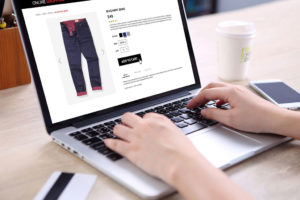What Is A Landing Page?
Let’s start by defining a landing page. A landing page is simply the page that your traffic lands on.
Deciding on this is an important decision – especially if you’ve spent time and effort on a campaign to get people to visit you in the first place. Do you send your traffic to the home page, the service or category page? Or do you send them to a specifically designed landing page? This decision can dramatically affect the results of your efforts to generate leads from your marketing campaigns. Here, we will briefly explain how to make the most effective use of landing pages.
The Difference Between A Website and A Landing Page.
Put simply, there are 3 different types of places to send traffic:
1. Primary Site
A primary site contains everything about your business. It includes typical navigation and multiple options for different audience or product and service categories. Reading this, you may feel that this is something complex, but really, this is what most people would consider a “normal” website.
There is usually additional copy and elements, including snippets of the overall primary site content such as: About, Benefits, Testimonials and Call-to-actions, that are trying to funnel the website visitor into a page to conduct an action. A primary site is generally used to promote your entire business and is designed to cater for website traffic in all stages of the AIDA buying funnel.
Primary sites are mostly used when traffic is coming from the top of the sales funnel (and also while performing specific testing). Visitors will arrive at the primary site homepage or parent menu pages and navigate the website without the business having one specific desired outcome.
2. Micro Site
As the name suggests, a micro site is a smaller version of your primary site. A micro site should focus on a limited number of products or services with simpler navigation to reduce the amount of distractions for the website user. The idea behind a micro site is to concentrate the attention of users who are further down your sales funnel. Here you can capture your website users attention to guide them towards the specific services or products they have previously shown interest in.
The desired action of a micro site is for a specific action such as a form submission of sale. Many people confuse a micro site with a landing or squeeze page that is designed to generate a high commercial intent action.
3. Landing Page
As mentioned, a landing page or squeeze page is used to send web traffic who are at the bottom of your sales funnel and are ready to purchase or complete the desired action. Often landing pages are extremely useful for shorter sales cycles. The best performing landing pages have:
- No navigation
- Typically very few links
- Clear call to actions
- Some supporting content like testimonials of about us
- Offers a sense of immediacy and urgency
There are a few elements to consider when designing a landing page to ensure that it will increase your conversion rate. The most important is the 1:1 ratio. As you get the attention ratio closer to 1:1 (by this we mean, there is 1 link, for 1 desired outcome), there will be an increase in conversion rates. The more irrelevant links and information you have on a page (that are not conducive of the desired action) the more likely that website visitor is going to be distracted. Even if they are almost at the bottom of your sales funnel and ready to purchase.
The Key To Using Landing Pages Effectively
We mentioned that having a landing page with a 1:1 ratio is most effective for attaining the desired outcome (be it a sale, a sign up or a subscription). While this is our number 1 key strategy in creating effective landing page, a simple landing page isn’t always appropriate.
Over time, your business will have many different goals. Maybe the goal is to have potential customers to learn what you’re all about. Possibly your aim is to educate on a particular topic. And at times, maybe it is to increase the sales of one specific product. The important thing is to determine the goal, and to send the right visitors the right type of website; be is a primary site, micro site or landing page.
Want more quality information about conversion rate optimisation? Get in touch with us today.






